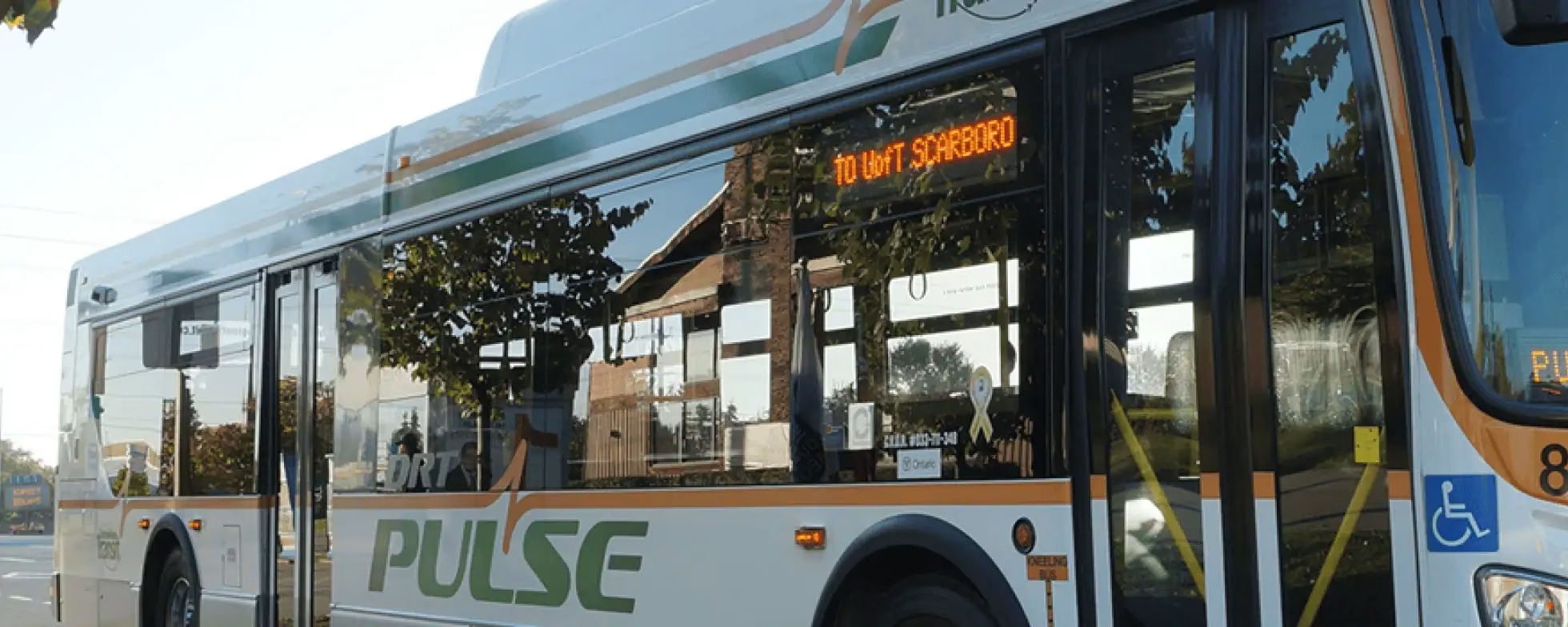Construction is under way on the first segment of the Durham–Scarborough Bus Rapid Transit (DSBRT) corridor, a major regional transit project that will ultimately create a roughly 36-kilometre rapid transit route linking Scarborough with communities across Durham Region, including Pickering, Ajax, Whitby and Oshawa.
The initial construction zone is on Kingston Road (Highway 2) in Ajax, between about 300 metres west of Harwood Avenue and Galea Drive. Work on this Ajax segment began in August 2025 and is the first phase of a staged delivery approach for the full corridor.
Planned elements for the Ajax segment (and intended for many future sections) include:
Dedicated median bus lanes and raised transit platforms for faster, more reliable service;
Transit-priority signal upgrades to reduce delays;
Accessible sidewalks and in-boulevard cycle facilities to improve active-transport connections;
Underground utility upgrades alongside streetscape improvements, lighting and landscaping.
The DSBRT is a multi-stage program: while the Ajax section is under construction, numerous other segments remain in planning, design or funding phases. Project documents and regional announcements show the corridor will be built in stages, with some portions already funded and others awaiting further capital commitments.
Key planning figures for the corridor include an estimated ~49 stops, high-frequency peak service (targeting roughly every 5 minutes on core sections), and long-term ridership projections in the tens of thousands per weekday — outcomes that underpin the project’s aim to cut travel times, boost transit mode share and support sustainable regional growth.
Funding for the DSBRT combines federal, provincial and regional sources; the program has received federal-provincial cost-sharing through infrastructure programs, with implementation staged as funding and approvals are secured for each segment.
Why this matters
The DSBRT is designed to convert a heavily traveled arterial into a higher-capacity, multimodal corridor that strengthens connections between Durham communities and Toronto’s transit network. Its benefits include faster and more predictable transit service, improved safety and accessibility, and new active-transport links that support economic and housing growth along the route.
Integrated Infrastructure to Support Active Mobility
The DSBRT has been carefully crafted to promote a multimodal transportation experience. Beyond just bus lanes, the project includes median transit platforms, pedestrian-friendly sidewalks, and protected cycle tracks with crossrides to encourage active travel. Infrastructure enhancements also involve watermain and sanitary sewer upgrades, street lighting, and accessibility improvements. KAPP Infrastructure is mobilizing on-site as construction ramps up, with this phase targeting completion by June 2027. The project is being delivered with municipal partners under the Investing in Canada Infrastructure Program (ICIP).
Transforming Regional Transit with Efficiency and Scale
Once fully operational, the DSBRT will offer two-way bus service at five-minute intervals, significantly reducing travel times by as much as 20 minutes across the corridor. Spanning 36 kilometres with 49 stops, the route will serve high-density areas in Oshawa, Whitby, Ajax, Pickering, and Scarborough. What’s more, projections estimate over 38,000 daily riders by 2041. Also, 43,000 new residents and 26,000 new jobs expected within walking distance of the route by then. The corridor is positioned to play a critical role in regional growth and sustainable urban development.
Also Read $34 Billion Trans-Mountain Pipeline Expansion Opens in Canada After Several Years of Delay
Navigating Disruptions and Building Toward the Future
During construction, temporary lane closures and traffic shifts, especially around Harwood and Galea, are expected. Businesses will remain accessible and “Open for Business” signage will help maintain visibility. While noise and vibrations are inevitable, mitigation strategies and community engagement plans are in place.
Also Read $414M Contract Awarded for Franconia-Springfield Rail Bypass
Additionally, a notable design feature of the DSBRT is its hybrid layout. Developed by Metrolinx, which combines center-running bus lanes in wide corridors with curbside lanes in tighter urban zones. This approach balances transit efficiency with local accessibility and may allow for future conversion into a light rail line. Furthermore, the design’s adaptability reflects forward-thinking infrastructure planning. It ensures the DSBRT can evolve alongside the region’s needs for decades to come.
This is not the only bus rapid transit project advancing in the Greater Toronto Area, as Mississauga’s Lakeshore Bus Rapid Transit is also entering its design phase.
Durham–Scarborough Bus Rapid Transit Project Overview
Project Scope: 36-kilometre rapid transit corridor from Scarborough to Oshawa via Pickering, Ajax, and Whitby.
Phase One Location: Kingston Road (Highway 2) in Ajax, from west of Harwood Avenue to Galea Drive.
Estimated Cost: Over C$1 billion for the entire corridor.
Key Features: Dedicated bus lanes, median stations, cycle tracks, pedestrian upgrades, sewer/watermain improvements, and landscaping.
Start and Completion Dates: Construction begun on August 2025, with completion of phase one expected by June 2027.
Lead Contractor: KAPP Infrastructure.
Funding Program: Delivered under the Investing in Canada Infrastructure Program (ICIP).
Projected Impact: 38,000+ daily riders by 2041; travel time reduced by up to 20 minutes.
Future-Proof Design: Hybrid layout allows future conversion to light rail, adaptable to growth and changing transit needs.

